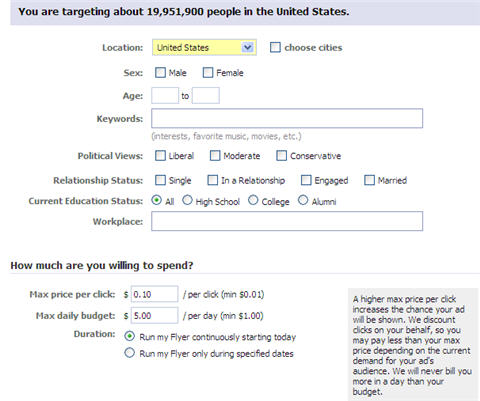The next big thing: User-contributed metadata

We know all about user-generated content, masses of users contributing to burgeoning Web corpus. It's a manifestation of Web 2.0, the participatory Net, which companies like Google (YouTube), Yahoo (Flickr), Fox (MySpace), etc. are feasting on.
In parallel, users are contributing a potentially far more lucrative Web currency--metadata about themselves. It's the currency that will help Facebook grow into its $15 billion valuation. In addition, users are also contributing structured (meta) data about data, which will help the semantic Web to flower.
User-contributed (or generated) metadata is the high value, structured matter that allows ads, and the overall user experience, to be more personalized. From an advertiser perspective, the more precision targeting drives much higher response. From the user perspective, you get advertising content that is more likely to be of interest.
In addition to the social graph of friends, Facebook optionally collects data on sex, birth date, location, political views, religious views, relationship status, interests, education and work history and favorite music, movies, TV shows and books. That metadata about a person can be used to personalize ad content beyond clickstreams, as Facebook is doing with its Flyer program.
As the social Web evolves, privacy and metadata ownership issues will continue to produce friction in the system. You get free and more personalized services in exchange for allowing Facebook, or other any other site that uses your metadata and attention stream as a kind of currency, to use your contributed metadata to target ads, presumably increasing their RPC (revenue per customer).
The metadata can be pooled and clustered, such as single females between 18 and 34 who are liberal and live in the Southwestern U.S., or targeted at individual consumers, real one-to-one marketing. Of course, users might be able to opt out of targeting schemes, depending on the terms of service, but the generally accepted practice is to use anonymized data, in this case the data about individuals, to deliver more targeted ad messages and services.
In effect, Facebook is building an identity graph, not just a social graph out of an individual's metadata. A key issue going forward is whether and how users become the control point for their online identities, including all the metadata that sites collect.
In addition to funneling metadata from individuals to the various walled social network gardens, users are increasingly providing data for a semantic layer of the Web. This goes beyond the usual tagging and bookmarking services. Metaweb's Freebase, for example, allows users to add metadata to the system, filling out preset fields to build a “web” of connections for people, geographies, products, services, sports, media, technology and other topics.
Radar Networks' Twine has captured more than 300,000 concepts in its system. As users add content to the system, Twine categorizes people, places, organizations and other tags, and finds the relationships among them. Users can define new categories and add metadata that helps improve the relevance engine.
Perhaps user-contributed metadata is linked to Web 3.0...perhaps not. Whatever the case, it is part of transforming the Internet, improving the signal to noise ratio and allowing more structure and intimate connections to permeate the Web.
